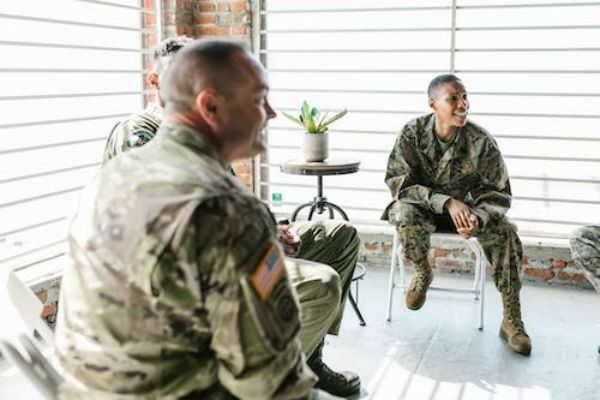用手机听。
因为现在课本后面都会标有二维码,可以用手机扫一扫,这个二维码可以获得它里面的一些内容,比如你想要找的听力,所以初一英语课课练听力可以用手机听。

初一即初级中学一年级(七年级),是中学生涯的初级阶段,同时也是从小学适应中学的重要阶段。
⑴ 单词
1. 介词:in, on, under, behind, near, at, of
1). in表示"在……中", "在……内"。例如:
in our class 在我们班上
in my bag 在我的书包里
in the desk 在桌子里
in the classroom 在教室里
2). on 表示"在……上"。例如:
on the wall 在墙上
on the desk 在桌子上
on the blackboard 在黑板上
3). under表示"在……下"。例如:
under the tree 在树下
under the chair 在椅子下
under the bed 在床下
4). behind表示"在……后面"。例如:
behind the door 在门后
behind the tree 在树后
5). near表示"在……附近"。例如:
near the teacher's desk 在讲桌附近
near the bed 在床附近
6). at表示"在……处"。例如:
at school 在学校
at home 在家
at the door 在门口
7). of 表示"……的"。例如:
a picture of our classroom 我们教室的一幅画
a map of China 一张中国地图
2. 冠词 a / an / the:
冠词一般位于所限定的名词前,用来署名名词所指的人或事物。冠词有不定冠词和定冠词两种。不定冠词有两个形式,即a和an。a用在以辅音音素开头的词前,如a book; an用在以元音音素开头的字母前,如an apple.
a或an与可数名词单数连用,泛指某类人或某物中的一个。
This is a cat.
这是一只猫。
It's an English book.
这是一本英语书。
His father is a worker.
他的爸爸是个工人。
the既可以用在可数名词前,也可以用在不可数名词前,表示某个或某些特定的人或事物,也可以指上文提到过的人或事物。
Who's the boy in the hat?
戴帽子的男孩是谁呀?
------ What can you see in the classroom?
------ I can see a bag.
------ Where's the bag?
------ It's on the desk.
------- 你能在教室里看到什么呀?
------ 我能看见一个书包。
------ 书包在哪呀?
------ 在桌子上。
3.some和any

①在肯定句中用some.例如:
There are some books on the desk.桌子上有一些书。
Lucy has some good books露西有一些好书。
②在疑问句和否定句中用any。例如:
Is there any ink in your pen?你的钢笔里有墨水吗?
Do you have any brothers and sisters?你有兄弟姐妹吗?
There isn't any water in the glass.杯子里没有水。
⑵记住它们的特殊用法。
①some亦可用于表示盼望得到对方肯定的答复或表示建议、委婉请求的疑问句中,这一点我们不久就会学到。例如:
Would you like to have some apples?你想吃苹果吗?
②any也可用于肯定句中,表示"任何的"。例如:
Any one of us can do this.我们当中任何一个都能做这个。
some 和any的用法是经常出现的考点,希望大家能准确地掌握它们的用法。
4.family
family看作为一个整体时,意思是"家庭",后面的谓语动词be用单数形式 is ;如把family看作为家庭成员时,应理解为复数,后面的谓语动词be应用are。
My family is a big family. 我的家庭是个大家庭。
My family are all at home now. 我的家人现在都在家。
Family强调由家人组成的一个集体或强调这个集体中的成员。home指个人出生、被抚养长大的环境和居住地点。 house指"家"、"房屋",侧重居住的建筑本身。
His family are all workers. 他的家人都是工人。
My home is in Beijing. 我的家在北京。
He isn't at home now. 他现在不在家。
It's a picture of my family. 这是一张我全家的照片。
5. little的用法
a little dog 一只小狗,a little boy 一个小男孩。little常用来修饰有生命的名词。
*但little还可表示否定意义,意为"少的",加不可数名词。
There is little time. 几乎没时间了。
There is little water in the cup. 杯中水很少。
⑵ 词组
on the desk 在桌子上
behind the chair 在椅子后
under the chair 在椅子下面
in her pencil-box 在她的铅笔盒中
near the door 在门附近
a picture of a classroom 一个教室的
look at the picture 看这张
the teacher's desk 讲桌
a map of China 一张中国地图
family tree 家谱
have a seat 坐下,就坐
this way 这边走
二. 日常用语
1. Come and meet my family.
2. Go and see. I think it's Li Lei.
3. Glad to meet you.
4. What can you see in the picture?
I can see a clock / some books.
5. Can you see an orange?
Yes, I can. / No, I can't.
6. Where's Shenzhen?

It's near Hong Kong.
7. Let me see.(口语)让我想想看。
see 在这是"明白、懂了",不可译作"看见"。例如:
8. Please have a seat.
seat表示"座位",是个名词。have a seat表示"就坐",也可以说take a seat, 和sit down的意思相同。
免责声明:本平台仅供信息发布交流之途,请谨慎判断信息真伪。如遇虚假诈骗信息,请立即举报
举报